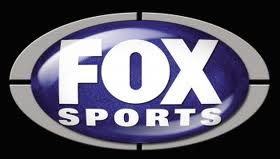 One of the abiding questions of recent times about what's happening with the business side of the Cleveland Indians revolves around the Dolans' recent sale of SportsTime Ohio.
One of the abiding questions of recent times about what's happening with the business side of the Cleveland Indians revolves around the Dolans' recent sale of SportsTime Ohio.
The Dolans went to some difficulty and expense to first cancel its television broadcast contract with Fox Sports Ohio and then launch their own cable venture m 2006 with Indians games as the centerpiece. Yet just a handful of years later they abandoned the project and sold STO, ironically to Fox Sports. Did the Dolans cash in? Is that what funded this past season's free agent splurge? Hard to know in either case, but perhaps they sold for a more mundane reason: it may not have been generating the profits they thought.
On the surface team owners establishing their own cable networks to broadcast their games seems like a good business plan. Essentially they sell the broadcast rights to themselves, one pocket to the other, and get cable television subscribers to fund it. What could go wrong?
Maybe nothing. Maybe everything. The Dolans aren't disclosing anything other than corporate speak to explain the rationale behind why they abandoned STO but perhaps a story in Tuesday's Wall Street Journal shed some light on what was really going on: cable operators don't want to pay huge fees to carry a channel the overwhelming majority of cable subscribers don't even watch.
As a backdrop, the Dolans weren't the first to establish what amounted to an in house cable network as a way of enhancing their revenues. In some sense they were probably a bit late to the party on that one. But as it turns out, those ventures weren't nearly as foolproof as club owners thought they would be.
Tuesday's story focused on a similar operation in Houston that was dedicated to broadcasting Astros and Rockets games but there's no reason to think the same math doesn't apply in Cleveland.
In Houston as in Cleveland, owners and investors wanted to cash in on what seemed to be ever increasing licensing fees passed merrily along to increasingly strapped cable television subscribers. It's kind of a "cake and eat it too" plan. The team sells its television rights to its own network. That network goes to the various cable operators and demands that the channel be carried on basic cable at a huge per subscriber fee. The owners get huge licensing fees and nearly all the advertising revenue.
And for years, that's exactly what's happened. Indeed, the single biggest content fee passed along to subscribers is that charged by ESPN to cable operators. Those operators don't want to alienate viewers and thus carry the channel, passing along the cost to the entire subscriber base. It's made ESPN rich enough to bid on the broadcast rights to baseball and football which, in turn, has given ESPN the clout to charge even higher fees to operators which, in turn, has further increased the monthly cable bills of all of us.
As ESPN thrived under the model, a mini explosion of similar channels followed, mostly focused on more discrete subjects such as the NFL, major league baseball, the Big 10, the SEC, and the like.
It works for just about as long as cable operators are willing to offer the channels and pass along the costs. That is becoming an increasingly more difficult task. Cable operators often argue that they are merely protecting the interests of their customers who don't want to keep seeing their monthly bills increase. That's true, but a convenient truth.
There is significant evidence, according to the Wall Street Journal story, that sports on television isn't nearly as popular as perceived. According to Nielsen ratings cited by the Journal, aside from the NFL and the biggest games in a handful of other sports, the TV audience for sports is about 4% or less of households on average. That's a pretty stunningly low number. For basketball and hockey, it's less than 3%. Ouch.
That means that somewhere around 96% of all cable subscribers are tuning in, if at all, only for the biggest games. For the most part, they could care less. That means that the same 96% of cable subscribers are paying so that the more rabid 3-4% can watch a midweek Golden State vs. Utah basketball game.
A more reasonable person might ask: why can't the 4% who want to watch sports on a regular basis simply pay for it themselves? The answer to that is simple and two-fold. First, there is a point at which even that 4% would not continue to ante up. There simply aren't enough viewers willing to pay enough money to justify the network's investment into broadcasting the sport. Second, it's more lucrative for networks to sell advertising time if they can plausibly argue that their reach is 96% bigger than it really is.
The other truth for the cable operators is less, shall we say, "consumer oriented." You see, many cable operators like Time Warner, also own and produce their own content that they like to have broadcast on their cable systems. Adding content they don't own competes for eyeballs with the content they do own, although perhaps not as much as they think. The bigger issue though is that as high cost sports networks push cable bills higher, customers abandon cable for something else, like the internets. That's bad for cable operators who have seen flat to declining customer growth for the last several years.
ESPN has enough market clout and diverse programming to mostly get what it wants. Rarely do you see cable operators drawing a line on them. But increasingly they are drawing a line with others. Time Warner, for example, refused to carry the NFL Network for years until the NFL lowered its economic demands and agreed to allow Time Warner to put the network on a sports tier that is paid for separately by the customers who want it. Undoubtedly that's hurt the financial model of the NFL Network even as it has expanded its theoretical reach.
All of this gets us back to STO. The Dolans didn't get into too many skirmishes with cable operators over the subscriber fees but they had to lower their financial demands to accomplish this and that in turn lowered the profits, not to mention the quality of the overall product. Outside of the Indians' game, the programming on STO mostly has the look and production values of a local cable access show and with about the same size audience.
So STO was sold to Fox Sports. But in many ways this is a different Fox Sports. In the last few years Fox Sports has been expanding its footprint and is launching its own ESPN clone of a network. Having regional programming that feeds into a national platform gives it a significant head start in its head to head death match with ESPN.
Given Fox's imperialistic plans, the Dolans undoubtedly realized a profit in the sale and perhaps that, more than anything else, likely funded the free agent shopping spree this last off season.
While the STO venture was mildly successful for the Dolans, it wasn't nearly as successful as they imagined. To the extent that has an impact on future budgets for the team itself, and undoubtedly it does, it makes it less likely that fans will see similar shopping sprees in future off seasons. Welcome to 2009, Indians fans.
**
 Speaking of business plans and because there are no such things as coincidences, the Indians have gone full Monty into what they like to call dynamic pricing, according to Crains Cleveland Business.
Speaking of business plans and because there are no such things as coincidences, the Indians have gone full Monty into what they like to call dynamic pricing, according to Crains Cleveland Business.
Essentially the Indians vary ticket prices like Las Vegas varies hotel prices. Buy early and you're likely to pay less, irrespective of the opponent. Wait until the last minute against a desirable opponent and expect to pay more.
Crains used the example of bleacher seats for the upcoming game against Texas on July 27th, which is a fireworks night. Initially tickets were sold for between $10 and $26, depending on location. The prices right now range from $30.25 to $36.
This has generated some mild complaints among some fans and has spurred a slight increase in advance ticket sales, which is the Indians' goal.
Fans who are complaining do so because they want the right to wait until the last second to buy a ticket without any consequence attached to it. But that's not a reality in most any other purchase and there's no compelling reason it should be the reality when it comes to Indians ticket purchases.
If I book a flight at the last minute, I expect to pay more. That may seem unfair except that by buying late I gave myself the maximum flexibility to change my plans. That flexibility came at a cost, of course, and I could have traded that off by taking more of a risk by buying it earlier and hoping my plans didn't change. It is a choice.
The same holds true for sports tickets. It can be hard for a fan to plan in April to attend a game in July without knowing how his plans could change. That's why many don't choose to buy tickets that far in advance. They don't want to take the risk that they've wasted their money. But there's no reason, moral, ethical, economical, that the Indians or any other team have to assure fans that tickets can be had at the same price the day before the game. It's simple risk shifting and there's nothing wrong with that.
As mentioned, the Indians are seeing some success with dynamic pricing which can only mean that there's no going back. That's a radical change from the days when you could literally walk up the day of the game and buy a good seat for the same price that the person sitting next to you paid two months prior. But on this issue, there's no faulting the Indians or the Cavs and Browns when they inevitably follow suit. Sometimes a business needs to be run like a business.
**
The Indians beginning the second half of a surprising season leads to this week's question to ponder: Who is more deserving of the first half MVP, Jason Kipnis or Terry Francona?